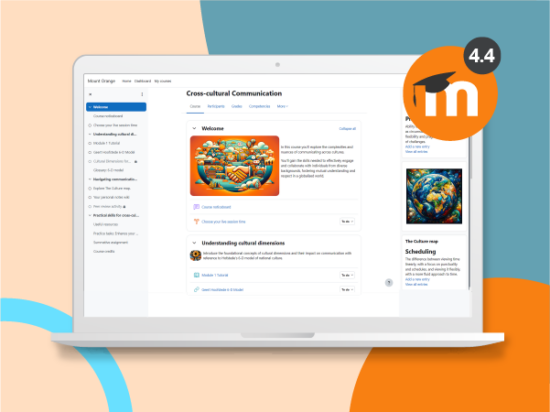Accessible design benefits all learners, and at Moodle, we want to ensure that every student has an equal opportunity to learn. When creating digital educational resources, one of the considerations that we need to be aware of is neurodiversity and how we can improve outcomes for individual students. We recently interviewed Lizzie Somerfield, neurodiversity advocate, about how educators are in a powerful and unique position to foster neuroinclusive environments in their classrooms.
What is neurodiversity?
Neurodiversity as a word sums up all types of brain function, from neurotypical brain function to those with neurodivergencies such as Autism, ADHD (Attention Deficit Hyperactivity Disorder) and Dyslexia. It’s currently estimated that up to 20% of the population is considered neurodivergent, with the most common variations being Dyslexia and Dyspraxia.
“These are all kind natural variations in how a human brain can appear. So they don’t need to be treated or cured. And there’s nothing inherently wrong with people who have these kind of brains and work in that kind of way. Neuroinclusive practice takes people with these natural neurodivergencies into account and actively takes measures to make sure their needs are accommodated,” says Lizzie.
“Educators are in a really powerful position also to be able to support and provide potential diagnosis resources” to students, and make the classroom “environment more inclusive upfront so that it’s more likely that more neurodivergent students will be default accommodated like neurotypical students already are”.
Here are some tips for creating a neuro-inclusive environment using Moodle and within other eLearning scenarios:
- Sensory environment:
eLearning lends itself to being a better fit for those who have sensory needs as they can be comfortable learning in a setting that suits them. “It’s definitely more accessible to us when we’re able to control a certain amount of our own environment” said Lizzie.
If you do require video conferencing during your eLearning course, then ensure you communicate that cameras can be switched off so that students can be more comfortable if they choose to.
- Predictability:
Having clear procedures available within your Moodle course for different scenarios will help maximise predictability. You can also increase predictability with a very clear content flow – this includes things like having a course outline, and keeping each section consistent. - Be clear!
Avoid jargon, ideally use plain language wherever possible. Avoid implied messages. If you are using terms the student may not know, use a glossary. Be clear about all instruction and what the desired outcome is.
- Show the key information:
You may be presenting a lot of information, but the way you design it should hero the key messages and concepts — through hierarchical design, additional contrast or other design elements. It’s best to avoid clutter wherever possible in your course as this can split focus. - Content formats:
Presenting content in different ways enables students to digest it the way that suits them. It could be as simple as adding an audio version for those who’d rather listen than read content. You can enable this easily through ReadSpeaker.
The ReadSpeaker for Moodle text-to-speech plugin is simple to implement and automatically speech enables content directly within the Moodle environment, allowing learners to listen to text at the click of a button.
Another way you can change the content format and make it more immersive and engaging to learners is “Branching scenarios”. This concept employs design strategies such as gamification, experiential education, and storytelling to make the material more interactive. Instead of a passive way of learning, learners must interact as they are continuously prompted to make decisions, just like playing a game. Branching scenarios are utilised to provide learners with different choices, allowing them to take charge. Realistic feedback is provided in a dynamic manner, enabling learners to understand the result of their decisions.
Create your own branching scenarios with Moodle Certified Integration Partner Near-Life™. - Timing:
Give all assignments a reasonable time allocated for completion. Make sure you minimise last minute requests, and don’t set the expectation for students to reply immediately. - Be flexible:
“It’s really important to just like be led by the individual cause they’re really the expert on their own reality and what they’re experiencing”, says Lizzie.
Ask for feedback and be prepared to take it on board. Provide options for communication at the start of the course, as some people will have preferred communication methods. User experience and feedback should shape the way you create your course in order to achieve the best outcomes for all students.
This content has been adapted from: How educators can support neurodiversity podcast with Lizzie Somerfield. Listen to the conversation. Learn more at the Moodle Podcast.



